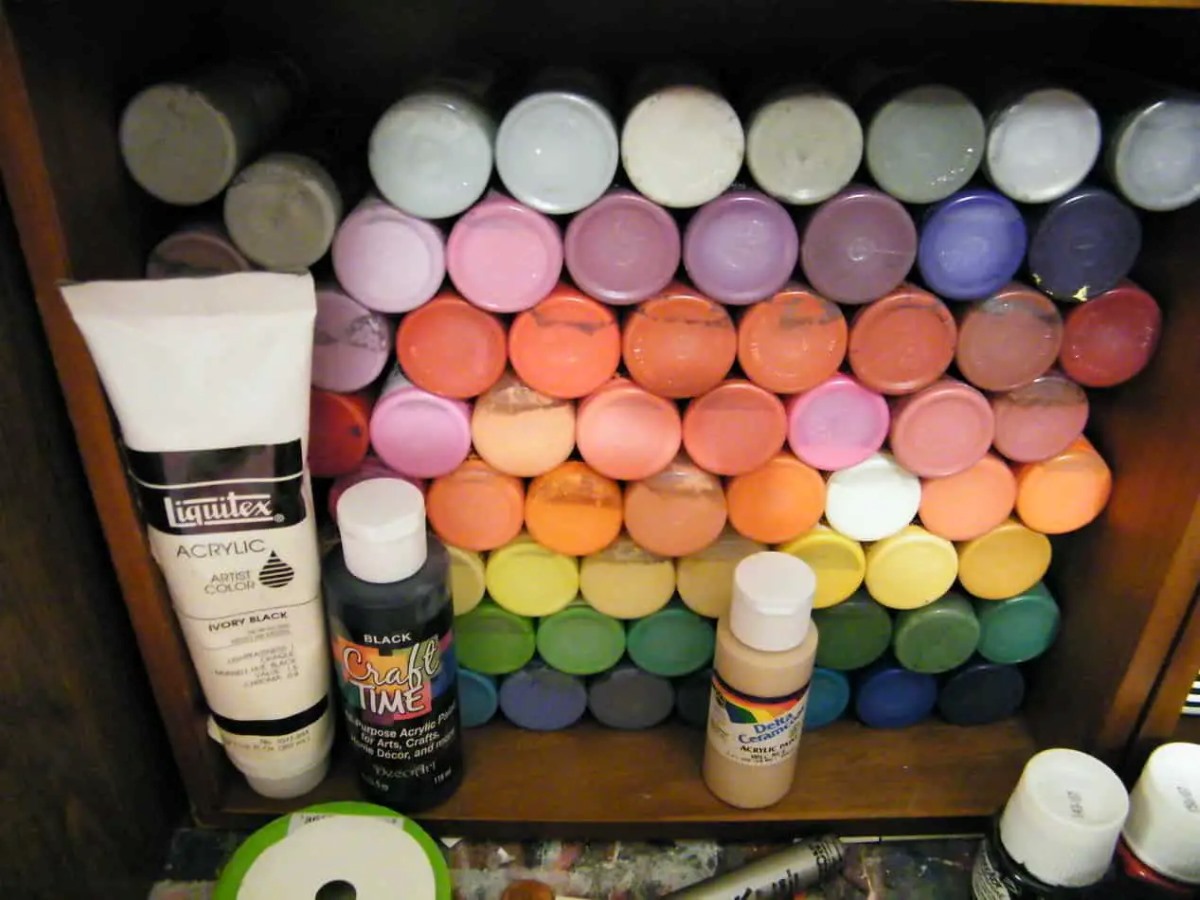

Articles
How To Store Acrylic Paint Bottles
Modified: February 28, 2024
Learn the best techniques for storing your acrylic paint bottles with our informative articles. Keep your paints fresh and ready for your next project!
(Many of the links in this article redirect to a specific reviewed product. Your purchase of these products through affiliate links helps to generate commission for Storables.com, at no extra cost. Learn more)
Introduction
Properly storing your acrylic paint bottles is essential for preserving their quality and extending their shelf life. Whether you are a professional artist or a hobbyist, taking the time to organize and store your paint bottles correctly will help prevent them from drying out, clumping, or becoming unusable. In this article, we will explore the benefits of properly storing acrylic paint bottles, factors to consider before storing them, recommended storage conditions, different storage options, tips for organizing and labeling, and precautions to ensure the longevity of your paint bottles.
Acrylic paint is a popular medium known for its versatility, bright colors, and quick-drying properties. However, if acrylic paint bottles are not stored properly, they can become thick, dry out, or separate, making them difficult to use for future projects. Additionally, exposure to extreme temperatures, sunlight, and air can degrade the quality of the paint, resulting in a loss of color vibrancy and texture.
By implementing the right storage techniques and conditions, you can preserve the quality and usability of your acrylic paint bottles for an extended period. Not only will this save you money by preventing wastage, but it will also ensure that your paints are ready to use whenever inspiration strikes. Let’s delve into the benefits of proper storage and explore the factors to consider before stashing away your paint bottles.
Key Takeaways:
- Properly storing acrylic paint bottles preserves quality, extends shelf life, and ensures ready-to-use paints, saving money and reducing waste. Organize, label, and follow best practices for a seamless painting experience.
- Consider temperature, humidity, light exposure, and airflow when storing acrylic paint bottles. Utilize recommended storage conditions, different storage options, and organization techniques to maintain paint quality and accessibility.
Read more: How To Store Acrylic Paintings
Benefits of Properly Storing Acrylic Paint Bottles
Properly storing your acrylic paint bottles offers numerous advantages that go beyond simply keeping them organized. Here are some key benefits:
1. Preserves Paint Quality:
One of the primary benefits of proper storage is preserving the quality of your acrylic paint. By storing them in optimal conditions, you can prevent the paint from drying out, clumping, or separating. This ensures that the paint remains smooth, consistent, and easy to work with, allowing you to achieve the desired results in your artwork.
2. Extends Shelf Life:
Acrylic paint has a limited shelf life, but proper storage can help extend its usability. When stored correctly, the paint bottles can last longer without degradation, allowing you to use them for multiple projects and preventing the need for frequent repurchasing.
3. Cost-effective:
By preserving the quality and extending the shelf life of your acrylic paint bottles, you can save money in the long run. Instead of having to replace dried-out or unusable paints, you can continue to use the stored paints for future projects, reducing wastage and ensuring that you get the most out of your investment.
Read more: How To Store Acrylic Paint
4. Ready-to-use Paints:
Proper storage ensures that your acrylic paints are always ready to use. You won’t have to spend time or effort reviving dried-out paints or dealing with clumps and separation. With well-stored paints, you can focus on your creative process without any interruptions or frustrations.
5. Consistent Color and Texture:
Acrylic paints can be sensitive to temperature changes and exposure to light. By storing them in optimal conditions, you can maintain the vibrancy and consistency of the colors. This is particularly important if you work on long-term projects or need to match specific colors across multiple paintings or artworks.
6. Waste Reduction:
When you store your paint bottles properly, you minimize the risk of spillage, leakage, or accidental damage. This reduces the chances of wasting valuable paint and helps keep your workspace clean and organized.
Overall, properly storing your acrylic paint bottles not only ensures their longevity but also enhances the quality and usability of the paint. It saves you money, reduces waste, and provides you with ready-to-use paints whenever inspiration strikes. With these benefits in mind, let’s explore the factors you need to consider before storing your acrylic paint bottles.
Factors to Consider Before Storing Acrylic Paint Bottles
Before you start stashing away your acrylic paint bottles, there are several important factors to consider. Taking these factors into account will ensure that your paint bottles remain in optimal condition and are easy to access when needed. Here are the key factors to keep in mind:
Read more: How To Store Acrylic Paint Tubes
1. Temperature:
Temperature plays a significant role in the longevity of acrylic paint. It is important to store your paint bottles in a place with a stable temperature, preferably between 65°F and 75°F (18°C and 24°C). Extreme temperatures can cause the paint to dry out or become gooey and unusable. Avoid storing your paint bottles in areas subject to direct sunlight or near heat sources like radiators or stoves.
2. Humidity:
Humidity levels can affect the consistency and drying time of acrylic paint. High humidity can lead to a longer drying time, while low humidity can cause the paint to dry too quickly, resulting in a less even finish. Aim to store your acrylic paint bottles in a space with moderate humidity levels, ideally between 40% and 60%. If the humidity levels fluctuate greatly in your area, consider using a dehumidifier or storing the paint bottles in airtight containers with desiccant packets.
3. Light Exposure:
Acrylic paint is sensitive to UV light, which can degrade the quality and color of the paint over time. It is crucial to store your paint bottles in a dark or dimly lit area to minimize light exposure. If possible, choose a storage location away from windows or install light-blocking curtains or blinds to shield the paint bottles from direct sunlight.
4. Airflow:
Airflow can affect the drying time and consistency of acrylic paint. It is best to store your paint bottles in a well-ventilated area. This helps prevent the accumulation of fumes and allows for proper air circulation, reducing the risk of mold or mildew growth. Avoid storing your paint bottles in airtight containers without sufficient ventilation.
Read more: How To Make Grass With Acrylic Paint
5. Accessibility:
Consider the accessibility of your paint bottles when choosing a storage option. You want to be able to easily access and retrieve the colors you need without having to dig through a cluttered or disorganized storage system. Opt for storage solutions that allow you to see the labels and arrange the bottles in a way that facilitates easy identification and retrieval.
By considering these factors and taking the necessary precautions, you can ensure that your acrylic paint bottles remain in optimal condition and are readily available for your artistic endeavors. Now that we have explored the factors to consider, let’s move on to the recommended storage conditions for acrylic paint bottles.
Recommended Storage Conditions for Acrylic Paint Bottles
To maintain the quality and usability of your acrylic paint bottles, it is important to store them under the right conditions. By following these recommended storage conditions, you can ensure that your paint bottles remain in optimal condition for an extended period:
1. Store in a Cool and Dark Place:
Choose a storage area that is cool, with a stable temperature between 65°F and 75°F (18°C and 24°C). Avoid areas subject to direct sunlight or heat sources, as excessive heat can cause the paint to dry out or become thick and unusable. Additionally, store your paint bottles in a dark or dimly lit area to minimize exposure to UV light, which can degrade the quality and color of the paint over time.
2. Use Airtight Containers:
Consider transferring your acrylic paint bottles to airtight containers for added protection. Airtight containers help prevent air, moisture, and contaminants from reaching the paint, ensuring its longevity. Mason jars or plastic containers with tight-fitting lids are ideal options for storing paint bottles. Make sure to label the containers for easy identification.
Read more: How To Clean Acrylic Paint Brushes
3. Arrange Paint Bottles Upright:
Storing acrylic paint bottles upright helps prevent leakage, clumping, and mixing of colors. It also allows you to easily read the labels and identify the colors you need. If you have a large collection of paint bottles, consider using a storage rack or shelf with compartments to keep them organized and upright.
4. Keep Paint Bottles Sealed:
Make sure the lids of your acrylic paint bottles are tightly sealed after each use. This prevents air from entering the bottles and drying out the paint. Wipe the rims of the bottles clean before sealing them to avoid any paint residue that could interfere with a proper seal.
5. Avoid Extreme Temperature and Humidity Changes:
Acrylic paint is sensitive to extreme temperature and humidity changes, which can cause the paint to dry out, clump, or separate. Avoid storing your paint bottles in areas prone to temperature fluctuations, such as basements, attics, or garages. Additionally, try to maintain a moderate humidity level between 40% and 60% to ensure the consistency and drying time of the paint.
6. Consider Refrigeration (Optional):
If you live in a hot and humid climate or want to prolong the shelf life of your acrylic paint, you can consider storing the paint bottles in the refrigerator. However, make sure to protect the paint bottles from moisture by placing them in a tightly sealed plastic bag or container. Before using the refrigerated paint, allow it to come to room temperature naturally, as sudden temperature changes can affect the consistency of the paint.
By adhering to these recommended storage conditions, you can keep your acrylic paint bottles in optimal condition, ensuring that they are always ready for your artistic creations. In the next section, we will explore the different storage options available for acrylic paint bottles.
Read more: What Paint Brushes Are Best For Acrylic
Different Storage Options for Acrylic Paint Bottles
There are various storage options available for acrylic paint bottles, depending on your space, storage needs, and personal preferences. Let’s explore some of the most popular options:
1. Paint Racks or Shelves:
Paint racks or shelves are a popular choice for storing acrylic paint bottles, especially for artists with a large collection. These racks typically feature open compartments or slots that allow you to arrange the paint bottles upright, making it easy to view and access the colors you need. Paint racks come in various sizes and configurations, ensuring you can find one that suits your storage requirements.
2. Storage Boxes or Totes:
Storage boxes or totes are a versatile option for organizing and storing acrylic paint bottles. These containers often come with dividers or compartments that allow you to separate and categorize your paint bottles. Opt for a transparent or translucent storage box to easily see the colors and their labels. Consider using foam inserts or padding to secure the paint bottles and prevent them from moving around during transit or storage.
3. Wall-mounted Organizers:
Utilizing wall space can be a great way to store and display your acrylic paint bottles. Wall-mounted organizers, such as pegboards or wall-mounted shelving systems, offer a space-saving solution. You can hang paint bottles using hooks or place them on the shelves, keeping them easily accessible and visible while freeing up your workspace.
4. Drawer Dividers or Inserts:
If you prefer to keep your paint bottles tucked away but still organized, using drawer dividers or inserts can be a practical choice. These dividers help create compartments within a drawer, allowing you to arrange and segregate your paint bottles. Labeling the dividers or using color-coded stickers can further enhance organization and ease of retrieval.
5. Portable Carrying Cases or Bags:
For artists who need to transport their acrylic paint bottles regularly, portable carrying cases or bags can be a convenient solution. These cases often come with compartments or pockets designed specifically for paint bottle storage. Look for a case with sturdy construction, secure closures, and handles for easy transport.
6. Customized DIY Solutions:
If you enjoy DIY projects or have specific storage needs, you can create custom storage solutions for your acrylic paint bottles. This could include repurposing old boxes, creating your own racks, or designing a storage system that perfectly fits your space and collection. Get creative and tailor the storage option to your preferences and available resources.
Consider your storage space, accessibility requirements, and the size of your paint bottle collection when selecting the most suitable storage option. Remember to prioritize organization and easy identification to ensure a seamless workflow in your art projects. In the next section, we will explore tips for organizing and labeling your acrylic paint bottles.
Tips for Organizing and Labeling Acrylic Paint Bottles
Organizing and labeling your acrylic paint bottles is essential for easy identification, efficient workflow, and hassle-free painting sessions. Here are some tips to help you keep your paint bottles neatly organized:
Read more: What Grit Sandpaper For Acrylic Paint
1. Categorize by Color or Brand:
Consider organizing your acrylic paint bottles by color or brand. Categorizing them in this way allows for quick and easy selection when working on specific projects or when trying to match colors. Use separate compartments, shelves, or containers for each color or brand to ensure a systematic organization.
2. Utilize Color Coding:
If you have a large collection of acrylic paint bottles, color coding can be a helpful technique for quick identification. Assign specific colors to particular categories or groupings and attach color-coded labels or stickers to the paint bottle caps or lids. This technique enables you to locate the desired color at a glance.
3. Label with Details:
Proper labeling is essential for easy identification of your acrylic paint bottles. Use permanent markers or adhesive labels to write the color name, brand, and any other relevant details on the bottle cap or label. This will prevent confusion and save you time when searching for specific colors.
4. Arrange Bottles Upright:
Storing your acrylic paint bottles upright helps maintain a neater and more organized storage system. This orientation prevents leakage, clumping, and mixing of colors. Invest in paint racks, shelves, or storage containers that allow you to arrange the bottles vertically and keep them well-supported.
Read also: 12 Best Acrylic Paint For 2024
5. Keep Frequently Used Colors Accessible:
Identify the colors you use most frequently and keep them in easily accessible locations. This can include placing them on the front row of a paint rack or keeping them in a separate container on your workspace. Keeping frequently used colors within reach saves time and makes your painting process more efficient.
6. Regularly Declutter and Reorganize:
Take the time to declutter and reorganize your paint collection periodically. Dispose of any dried-out or unusable paints and organize the remaining bottles according to your preferred system. Regularly reviewing and reorganizing ensures that your paint collection stays up to date and facilitates a clutter-free workspace.
7. Consider Inventory Management:
If you have a vast collection of acrylic paint bottles, consider implementing an inventory management system. This can be as simple as keeping a digital or physical record of your paint colors, brands, and quantities. An inventory management system helps you stay organized, restock when necessary, and avoid duplicate purchases.
By following these tips for organizing and labeling your acrylic paint bottles, you can create a well-structured and efficient system that enhances your artistic process. In the next section, let’s explore some precautions and best practices for storing acrylic paint bottles.
Precautions and Best Practices for Storing Acrylic Paint Bottles
While storing acrylic paint bottles, it is important to follow certain precautions and best practices to ensure the longevity and quality of the paint. Here are some key considerations to keep in mind:
Read also: 12 Superior Acrylic Paint Set For 2024
1. Avoid Freezing:
Acrylic paint should not be exposed to freezing temperatures. Freezing can cause the paint to separate or solidify, making it difficult to use. Avoid storing your paint bottles in unheated spaces or areas susceptible to freezing, such as garages or sheds.
2. Store Away from Children and Pets:
Acrylic paint should be stored out of the reach of children and pets. Some acrylic paints may contain toxic substances that can be harmful if ingested or inhaled. Store your paint bottles in a secure location, preferably in locked cabinets or high shelves, to prevent accidental access.
3. Shake Gently Before Use:
Before using acrylic paint, give the bottle a gentle shake to ensure that the pigments and binders are well mixed. Avoid vigorous shaking, as it can introduce air bubbles and cause the paint to foam, affecting the texture and finish of your artwork.
4. Keep Paint and Art Supplies Separated:
Store your acrylic paint bottles away from other art supplies, especially those that emit strong odors or contain solvents. Chemical interactions between different materials can potentially impact the quality and stability of the paint. Keep your paint bottles in a dedicated storage area, separate from other art materials.
Read also: 9 Amazing Acrylic Paint Pens For 2024
5. Check for Contamination:
Regularly inspect your acrylic paint bottles for any signs of contamination, such as mold growth or discoloration. If you notice any abnormalities, discard the affected paint immediately to prevent cross-contamination of your other colors.
6. Avoid Mixing Brands or Types:
Avoid mixing different brands or types of acrylic paint unless specifically recommended by the manufacturers. Mixing incompatible paints can cause chemical reactions that result in a loss of paint quality or even irreversible damage.
7. Properly Dispose of Expired or Unusable Paint:
If you come across expired or unusable acrylic paint bottles, follow proper disposal guidelines. Local recycling centers or hazardous waste facilities may have specific instructions for disposing of acrylic paint bottles. Avoid pouring unused paint down the drain or throwing it in the regular trash.
By following these precautions and best practices, you can ensure the safe and effective storage of your acrylic paint bottles. Taking these measures will help maintain the quality of the paint and ensure a seamless painting experience. In the next section, let’s conclude our discussion on storing acrylic paint bottles.
Conclusion
Properly storing and organizing your acrylic paint bottles is essential for preserving their quality, extending their shelf life, and ensuring a seamless painting experience. By considering factors such as temperature, humidity, light exposure, and airflow, you can create the ideal storage conditions for your paint bottles.
Following the recommended storage conditions, such as storing in a cool and dark place, using airtight containers, and arranging bottles upright, will help maintain the longevity and usability of your acrylic paint. Different storage options, such as paint racks, storage boxes, or wall-mounted organizers, offer versatile solutions to suit your space and collection size.
Organizing and labeling your acrylic paint bottles by color, brand, or using color-coding techniques enhances accessibility and streamlines your workflow. Regularly decluttering and reorganizing your collection ensures that you have a well-maintained and efficient storage system.
Remember to follow precautions and best practices such as avoiding freezing, keeping paint away from children and pets, and checking for contamination. Properly disposing of expired or unusable paint is also important for environmental safety.
Taking the time to store your acrylic paint bottles properly and maintain an organized system not only protects your investment but also ensures that your paints are always ready to use for your creative projects. By implementing these tips and practices, you can enjoy the benefits of vibrant colors, smooth texture, and extended shelf life for your acrylic paints.
So, whether you are a professional artist or a hobbyist, make sure to dedicate some time and effort to properly store and organize your acrylic paint bottles. Your artistic journey will be greatly enhanced, and you will be able to unleash your creative potential with ease.
Frequently Asked Questions about How To Store Acrylic Paint Bottles
Was this page helpful?
At Storables.com, we guarantee accurate and reliable information. Our content, validated by Expert Board Contributors, is crafted following stringent Editorial Policies. We're committed to providing you with well-researched, expert-backed insights for all your informational needs.
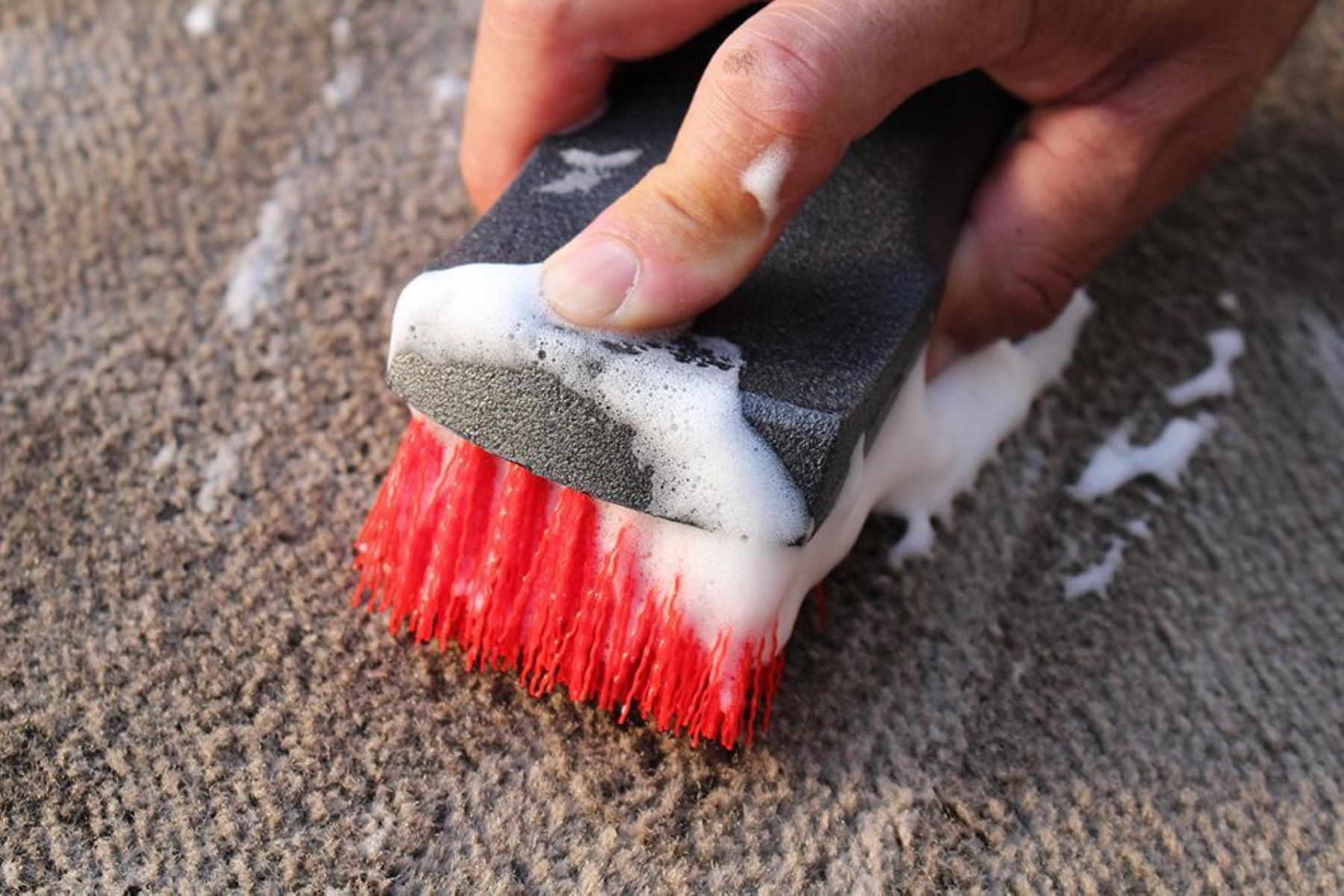
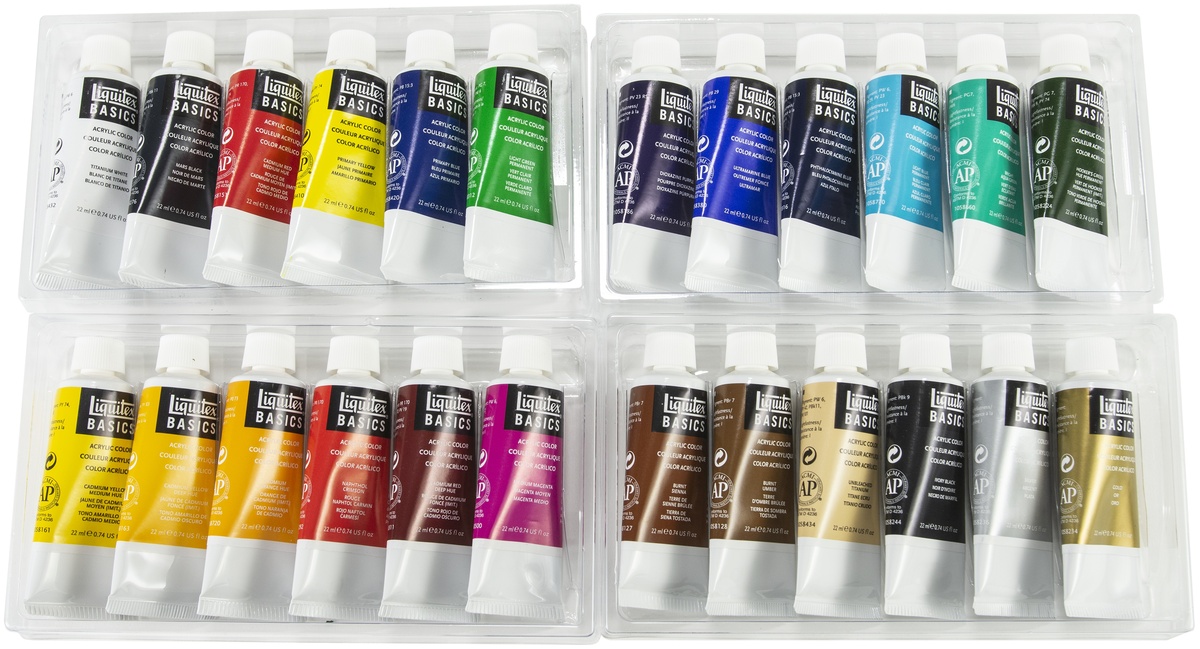
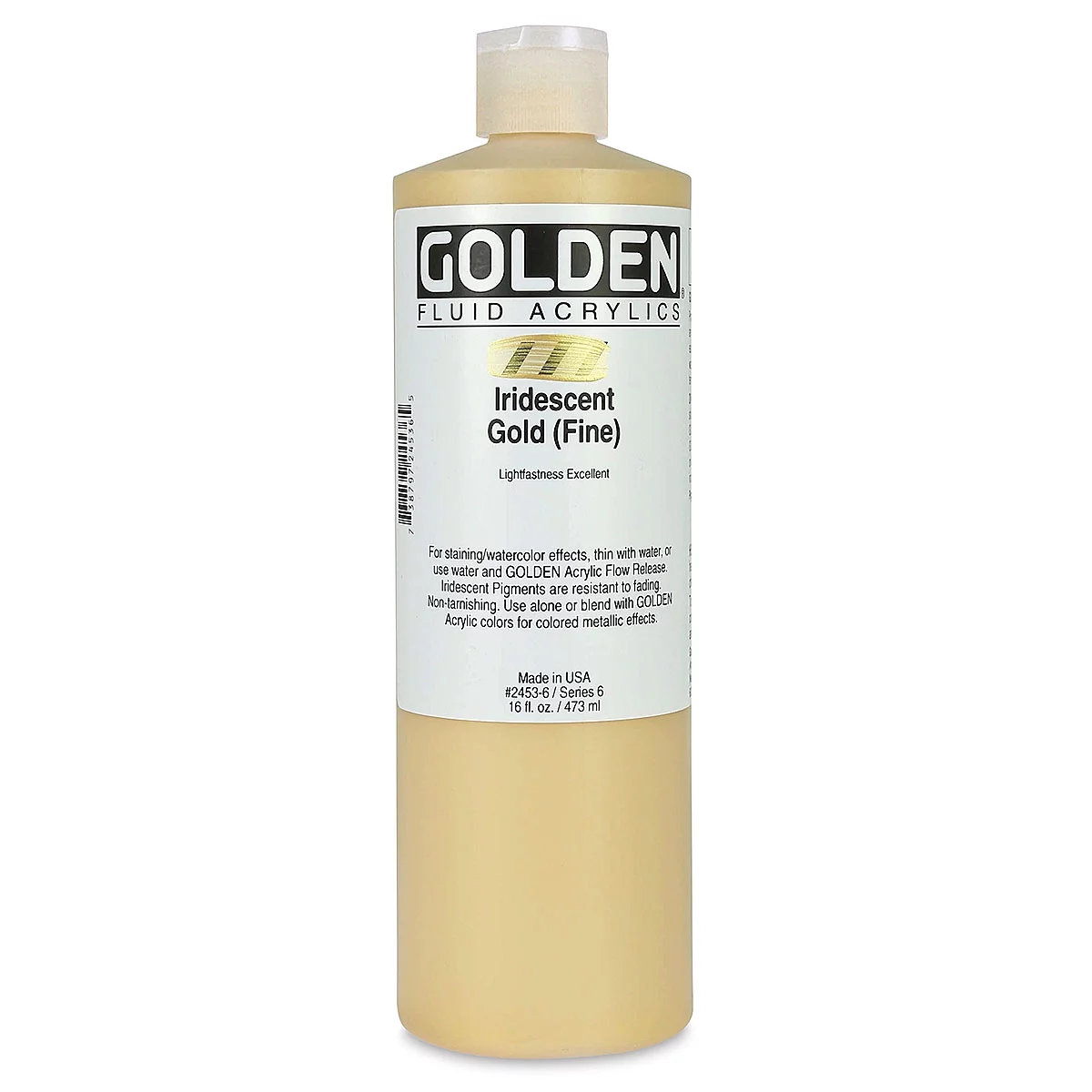

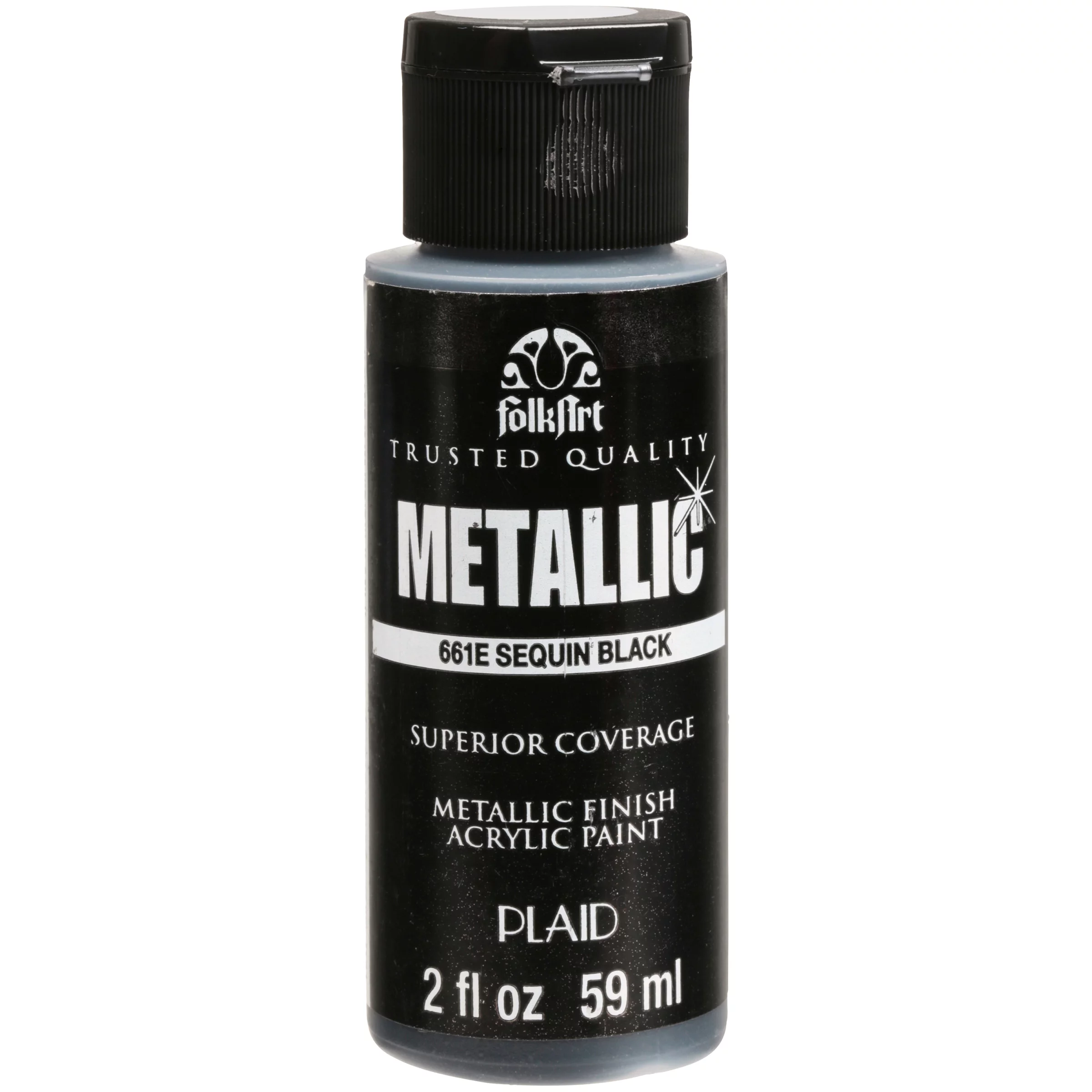

0 thoughts on “How To Store Acrylic Paint Bottles”